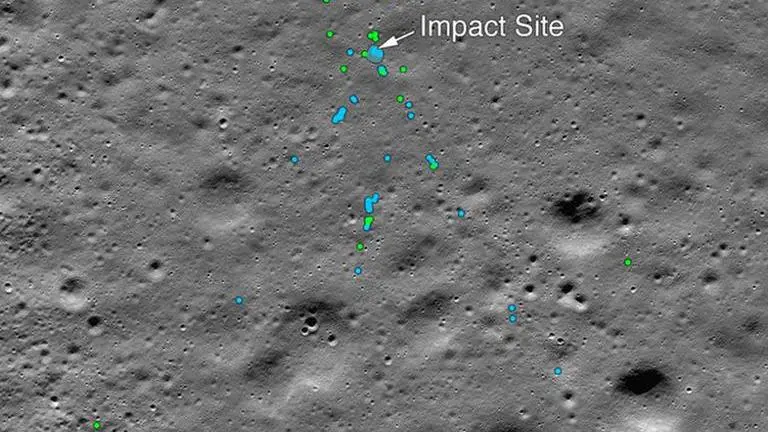Updated 3 December 2019 at 05:54 IST
NASA satellite locates Chandrayaan 2's Vikram lander on lunar surface
The US space agency NASA has confirmed its Lunar Reconnaissance Orbiter has located the Vikram lander of Chandrayaan 2 mission on the surface of the moon
- India News
- 3 min read

In a huge development, the US space agency National Aeronautics and Space Administration (NASA) has confirmed that it has located the Vikram lander of Chandrayaan 2 mission on the lunar surface. The Vikram lander was targeted for a highland smooth plain about 600 kilometres from the south pole of the moon. Unfortunately, ISRO lost contact with its lander shortly before the scheduled touchdown on September 7.
NASA tweets good news
The #Chandrayaan2 Vikram lander has been found by our @NASAMoon mission, the Lunar Reconnaissance Orbiter. See the first mosaic of the impact site https://t.co/GA3JspCNuh pic.twitter.com/jaW5a63sAf
— NASA (@NASA) December 2, 2019
The image tweeted by NASA shows the Vikram Lander impact point and associated debris field. Green dots indicate spacecraft debris (confirmed or likely). Blue dots locate disturbed soil, likely where small bits of the spacecraft churned up the regolith. "S" indicates debris identified by Shanmuga Subramanian.
Advertisement
Details on the findings from NASA
The Lunar Reconnaissance Orbiter Camera team released the first mosaic (acquired September 17) of the site on September 26 and many people have downloaded the mosaic to search for signs of the Vikram lander. Shanmuga Subramanian contacted the LRO project with positive identification of debris. After receiving this tip, the LROC team confirmed the identification by comparing before and after images. When the images for the first mosaic were acquired the impact point was poorly illuminated and thus not easily identifiable.
Two subsequent image sequences were acquired on October 14 and 15, and then on November 11. The LROC team scoured the surrounding area in these new mosaics and found the impact site and associated debris field. The November mosaic had the best pixel scale (0.7 metre) and lighting conditions (72° incidence angle). The debris first located by Shanmuga is about 750 meters northwest of the main crash site and was a single bright pixel identification in that first mosaic (1.3-metre pixels, 84° incidence angle). The November mosaic showed best the impact crater, ray, and extensive debris field. The three largest pieces of debris are each about 2x2 pixels and cast a one-pixel shadow.
Advertisement
Published By : Shubhayan Bhattacharya
Published On: 3 December 2019 at 05:25 IST
